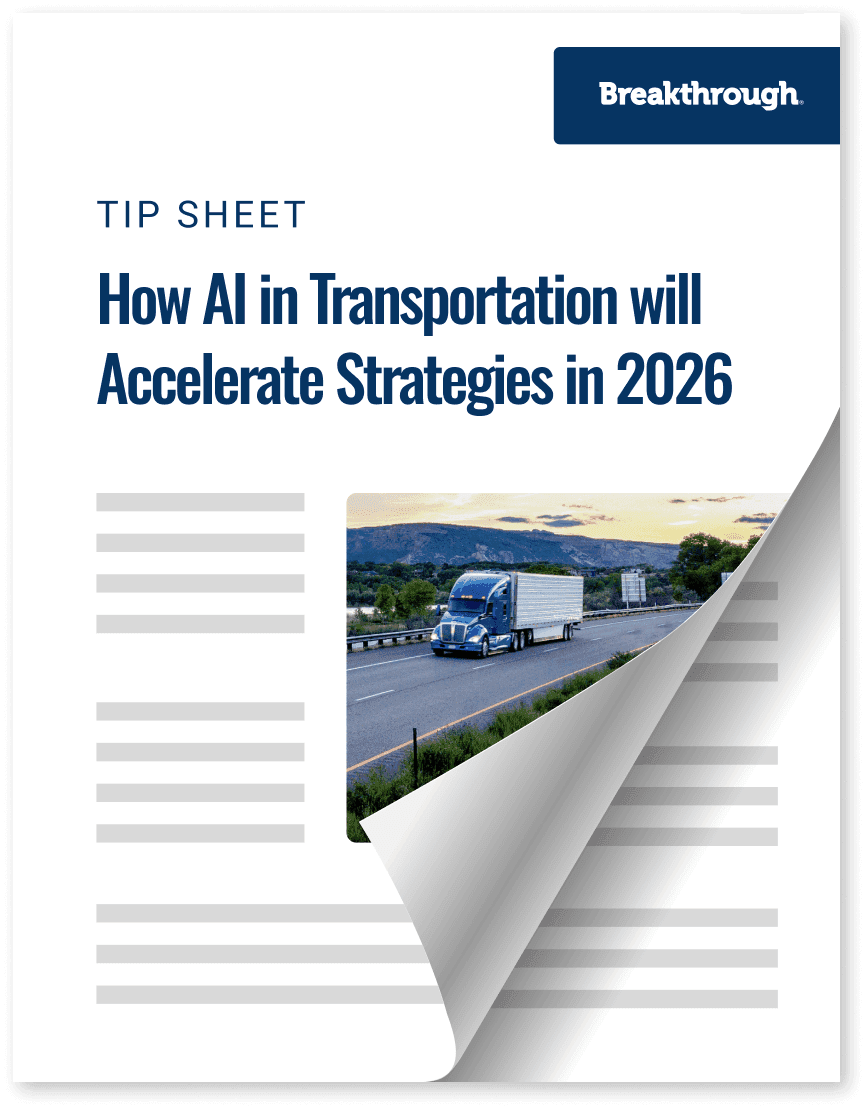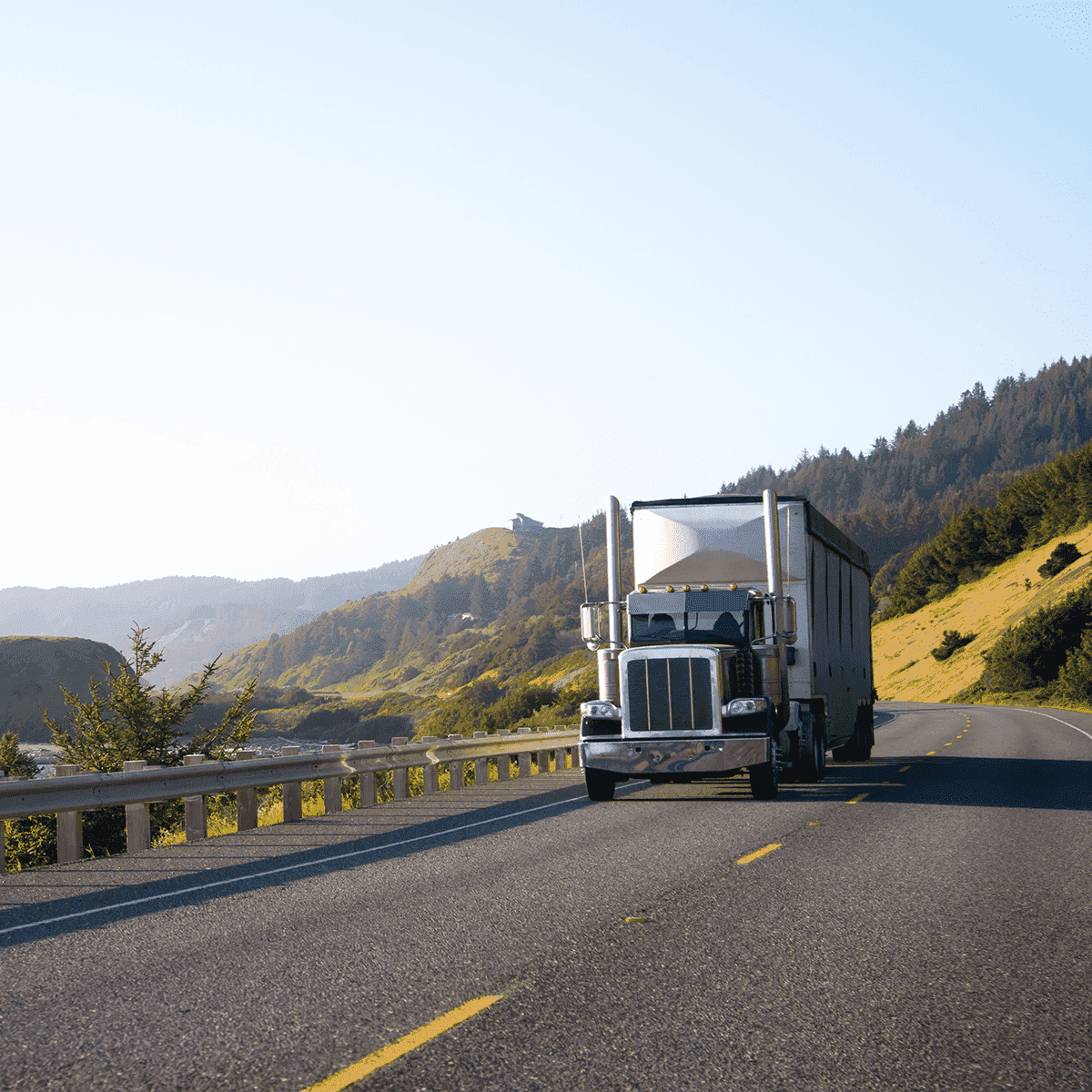How AI in Transportation will Accelerate Strategies in 2026

Trending
Top Posts
Fuel
Why Do Shippers Use The DOE Fuel Surcharge? A History Of The National Fuel Surcharge
5 min read
December 5, 2025
Market Events
How Ukrainian Drone Strikes on Russian Refineries Impact Your Fuel Costs
6 min read
November 20, 2025
Freight
The Definitive Guide on Fuel Management Systems
7 min read
November 11, 2025
5 min read
August 13, 2020

Share:
Table of contents
Browse the table of contents to jump straight to the part you’re looking for
At Breakthrough Heather Mueller leads our freight solutions, and Jenny Vander Zanden heads up energy operations. We sat down to talk to our COO’s about the challenges facing their shipper clients, who encompass over 7 billion transportation miles across 16 million shipments annually. From fuel to freight, data, and technology, their teams and areas of influence span the full scope of transportation strategies for some of the world’s most reputable brands.
Supply chain disruption is becoming more engrained in the business of moving goods to market every day. As 2020 market events intensify and transportation is being highlighted in areas outside of the supply chain, many executive leaders are looking for timely and insightful answers to inform their strategies and will be looking to their operational teams for insight.
Jenny Vander Zanden, who leads Breakthrough’s fuel management operations, says, “When it comes to communicating with leadership, supply chain and transportation professionals are expected to understand the complex economic factors at play, and, in turn, must be able to communicate those factors clearly and succinctly.”
For the transportation industry, this has created a balancing act between reacting to today’s challenges on the ground while maintaining an eye toward enduring initiatives on the horizon. As Heather Mueller, Breakthrough’s supply chain service offering owner, says, “being a good steward of the corporation requires a focus on both.”
The coronavirus pandemic has been devastating for the health and livelihoods of millions. The response of organizations to meet the needs of the consumers they serve has been immense. But the supply chain has proved not only its importance but its necessity through it all.
One of the biggest challenges facing manufacturers, retailers, CPG companies, the automotive industry, and other shippers is creating a supply chain that is robust and dynamic enough to deal with the unknowns of the next year and beyond.
As COVID-19 contributed to sudden changes in market dynamics—freight volume surged in some cases, dramatically decreased in others, and supply and demand for crude oil and transport fuels were thrown out of balanced. As all of these behaviors sent the supply chain in disarray, the shortcomings common throughout transportation strategies bared their true limitations.
In some cases, capacity was left at the loading docks when demand for durable goods plummeted amid the uncertainty of the pandemic’s economic impact. Other shippers scrambled to cover their freight using spot market solutions and brokerage to fill the holes left in their routing guide. Shippers using index-based fuel pricing overpaid significantly for the fuel moving those goods to market—averaging over 74 cents per gallon in over-reimbursement thus far in 2020. In almost every case, these disruptions lead to millions in unforeseen spend over time.
When freight dynamics deviate from the plan initiated in your last RFP and fuel prices swing wildly from forecast supply chain professionals may find themselves asking, “what is happening around me and how do I best prepare my organization for what is to come?”
Even in more stable market conditions, innumerable data points are being leveraged across the supply chain to understand what is happening in the industry. From track and trace technology to ELD installations, to entire data science teams emerging internally, startups and massive enterprises are working tirelessly to understand the industry’s challenge of the day, so they can create tomorrow’s opportunity.
Breakthrough’s COO’s are leading a new frontier in supply chain problem solving to answer these important questions. Their focus is on one all-encompassing question: “how do we leverage day-to-day shipment-level detail against the holistic freight ecosystem to make better decisions?” The key difference in a Breakthrough solution is our collective data approach.
No matter how much data one company uses to look at their supply chain network, this can only provide a unilateral view into what’s happening in the real world. The transportation ecosystem is complex. Your carriers serve dozens or more other shippers, and what you see may, or may not, be a reality for rest of the industry. Your freight manifests as one data point in a sea of millions of shipments, thousands of carriers, and innumerable external factors the influence the cost you see in a line item.
How can a team communicate the degree of influence a massive disruption, like COVID-19, has on their network if they don’t have access to the full picture? Exploring how one organization fits into the whole is the key to navigating the challenges of 2020’s supply chain from both a fuel and a freight perspective.
Mueller, Vander Zanden and their teams understand the importance of educating and communicating change to our clients so that they can have confidence in what their data is saying. This pushes the Breakthrough team to stay on the leading edge of the intricacies of the market.
Vander Zanden says, “There is a level of urgency coming from the C-suite that is really pushing transportation and its role in the supply chain to the forefront of conversations. Managing the current volatility of energy is becoming a priority because it makes determining 2021’s baseline budget difficult.”
Vander Zanden navigates these unknowns by empowering her clients. She says, “We are here to educate and advise our clients in ways that drive actionable and meaningful results. We have seen our clients really advance their strategies because together we can illustrate a full picture of the costs impacting their supply chain budgets.”

5 min read
December 5, 2025
The DOE fuel surcharge is an outdated, inaccurate method for fuel reimbursement. Learn why it costs you money and discover a modern, market-based alternative.
Read more
6 min read
November 20, 2025
Understand the impact of Ukrainian drone strikes on Russian refineries. Learn why diesel prices are volatile and how to protect your budget from market shocks.
Read more
7 min read
November 11, 2025
Discover how fuel management systems cut costs, track emissions, and improve reimbursement accuracy for modern freight operations.
Read more